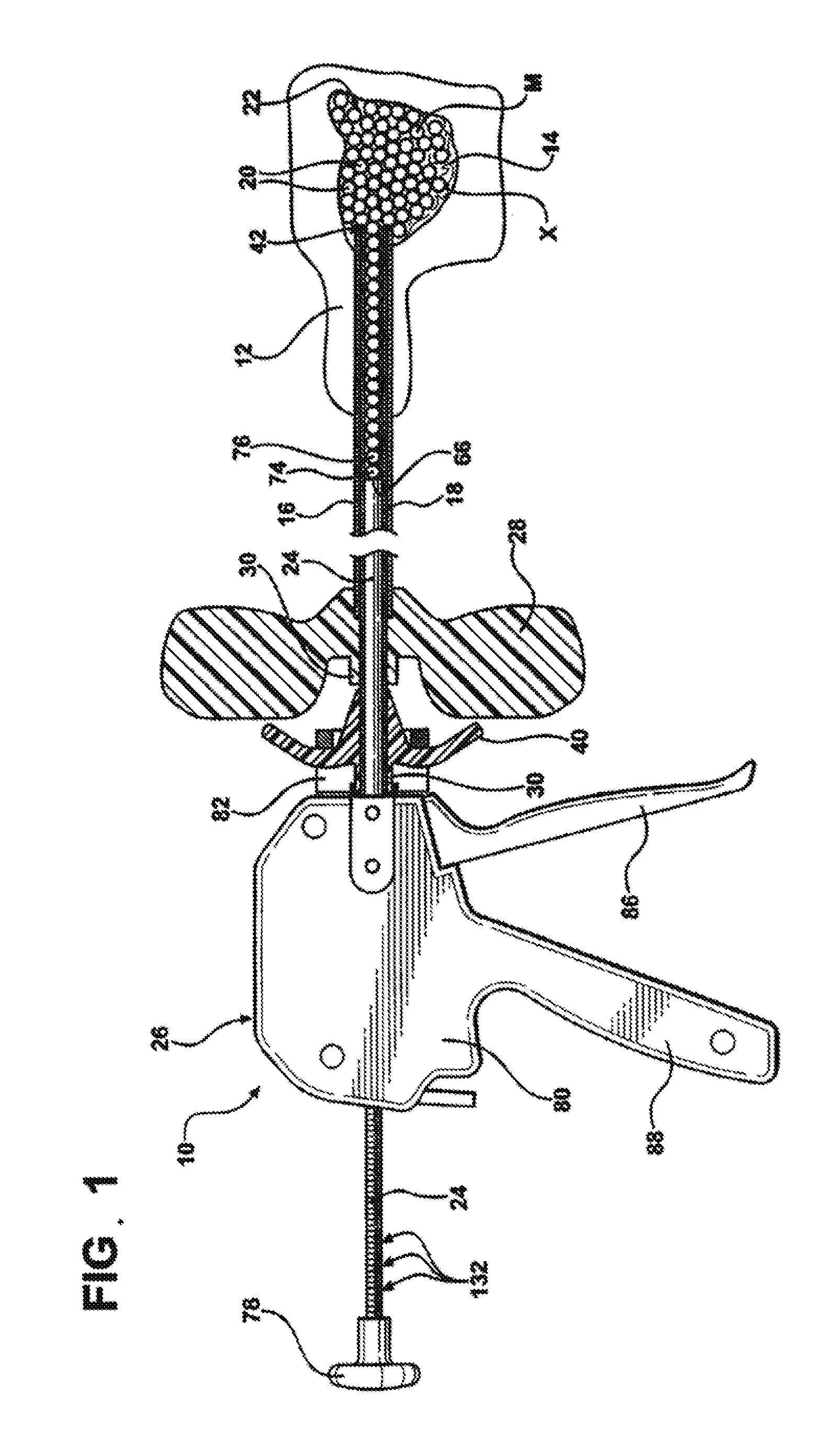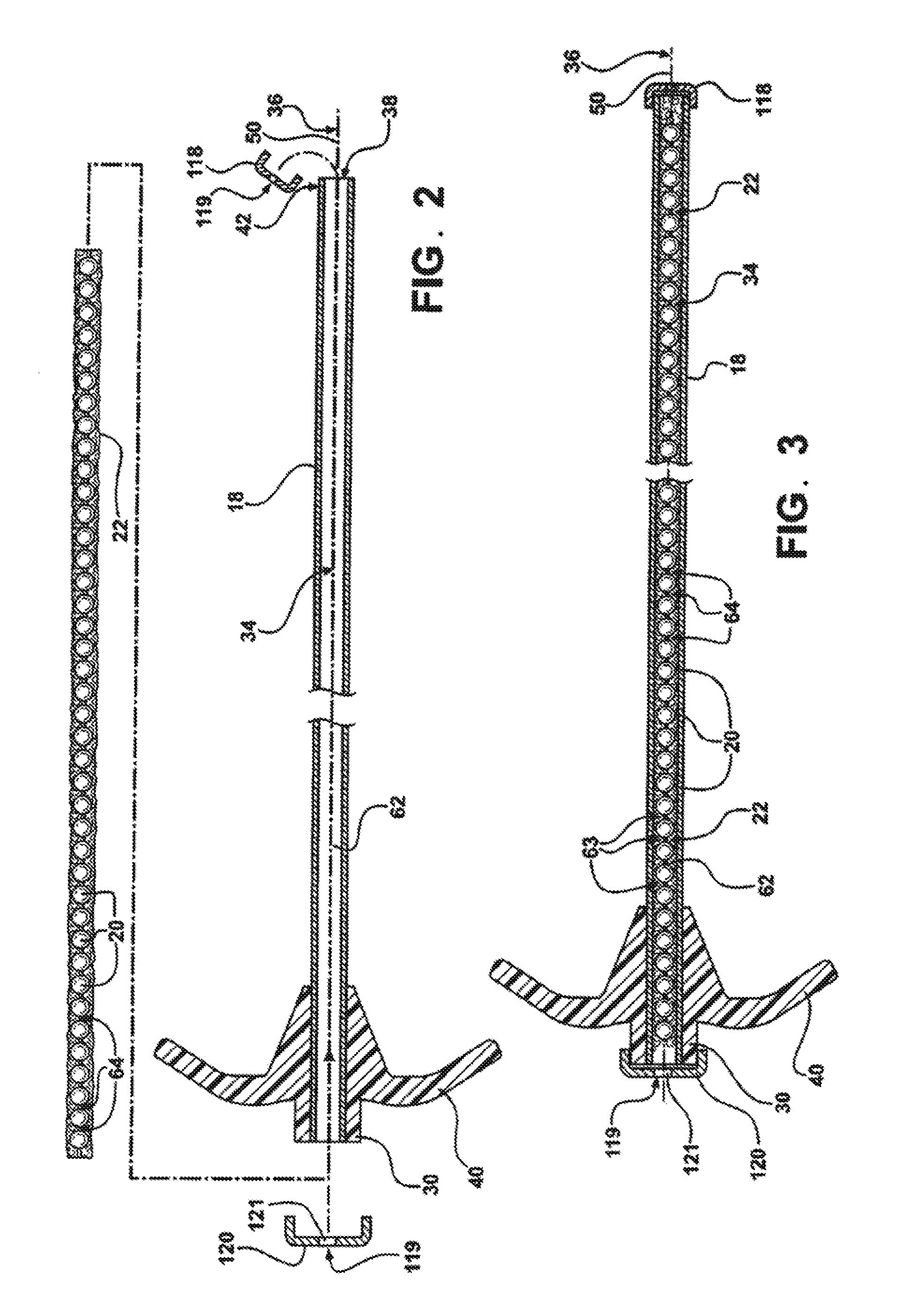System and method for deliverying an agglomeration of solid beads and cement to the interior of a bone in order to form an implant within the bone
a technology of liquid state cement and solid beads, which is applied in the field of system and method for delivering solid beads and liquid state cement for implantation into the interior of the bone, can solve the problems of reducing the effect of balloon-like devices, and reducing the quality of life, so as to prevent the movement of the implant, prevent the extravasation of the fluent material, and ensure the stability of the bony structur
- Summary
- Abstract
- Description
- Claims
- Application Information
AI Technical Summary
Benefits of technology
Problems solved by technology
Method used
Image
Examples
example 1
[0134] If the volume of the cement 22 delivered from the delivery cannula 18 is equal to the final volume available for the cement 22 in the interstitial gaps provided by the beads 20 in the final implant M, then cement 22 does not have to be delivered by displacement (pressure), but is transported or carried solely by the beads 20. Therefore, the cement 22 experiences no pressurization in the final implant M. In this instance, the likelihood of the cement 22 leaking outside of the implant M is reduced. This condition is illustrated in FIG. 26A. This is advantageous for percutaneous treatment of vertebral compression fractures since the likelihood of cement 22 leaking from the vertebral body 12 due to pressurization in the cement 22 would be minimized.
example 2
[0135] If the volume of the cement 22 delivered from the delivery cannula 18 is greater than the final volume available for the cement 22 in the interstitial gaps provided by the beads 20 in the final implant M, then at least a portion of the cement 22, i.e., the volume of the cement 22 equal to the volume difference, must be delivered by displacement and / or transported by the beads 20. Therefore, the cement 22 experiences a positive pressure and it would be expected that this pressure in the cement 22 will attempt to move until it finds a state of equilibrium within its surroundings at the target site X. As illustrated in FIG. 26B, when there is a positive pressure on the cement 22 the cement 22 moves to an outer boundary or periphery of the implant M. In some cases, it may be desirable to provide some of the cement 22 at the outer boundary of the implant M to better secure the implant M in the target site X, to bond with cancellous bone 14 outside of the implant M, and the like. T...
example 3
[0136] If the volume of the cement 22 delivered from the delivery cannula 18 is less than the final volume available for the cement 22 in the interstitial gaps provided by the beads 20 in the final implant M, then the cement 22 does not have to be delivered by displacement, but may be transported solely by the beads 20. Therefore, the cement 22 experiences a theoretical negative pressure and not all of the interstitial spaces between the beads 20 in the target site X are filled with the cement 22, as illustrated in FIG. 26C. It may be desirable to provide an implant M that is loosely packed in the target site X such that a volume of interstitial spaces between the beads 20 is greater than the amount of the cement 22 delivered to the target site X. This may be advantageous to facilitate tissue in-growth in the void spaces.
[0137] Examples 1, 2, and 3 may be desirable for different applications. Each of the examples can be achieved by using the disclosed low pressure design principles...
PUM
 Login to View More
Login to View More Abstract
Description
Claims
Application Information
 Login to View More
Login to View More - R&D
- Intellectual Property
- Life Sciences
- Materials
- Tech Scout
- Unparalleled Data Quality
- Higher Quality Content
- 60% Fewer Hallucinations
Browse by: Latest US Patents, China's latest patents, Technical Efficacy Thesaurus, Application Domain, Technology Topic, Popular Technical Reports.
© 2025 PatSnap. All rights reserved.Legal|Privacy policy|Modern Slavery Act Transparency Statement|Sitemap|About US| Contact US: help@patsnap.com



